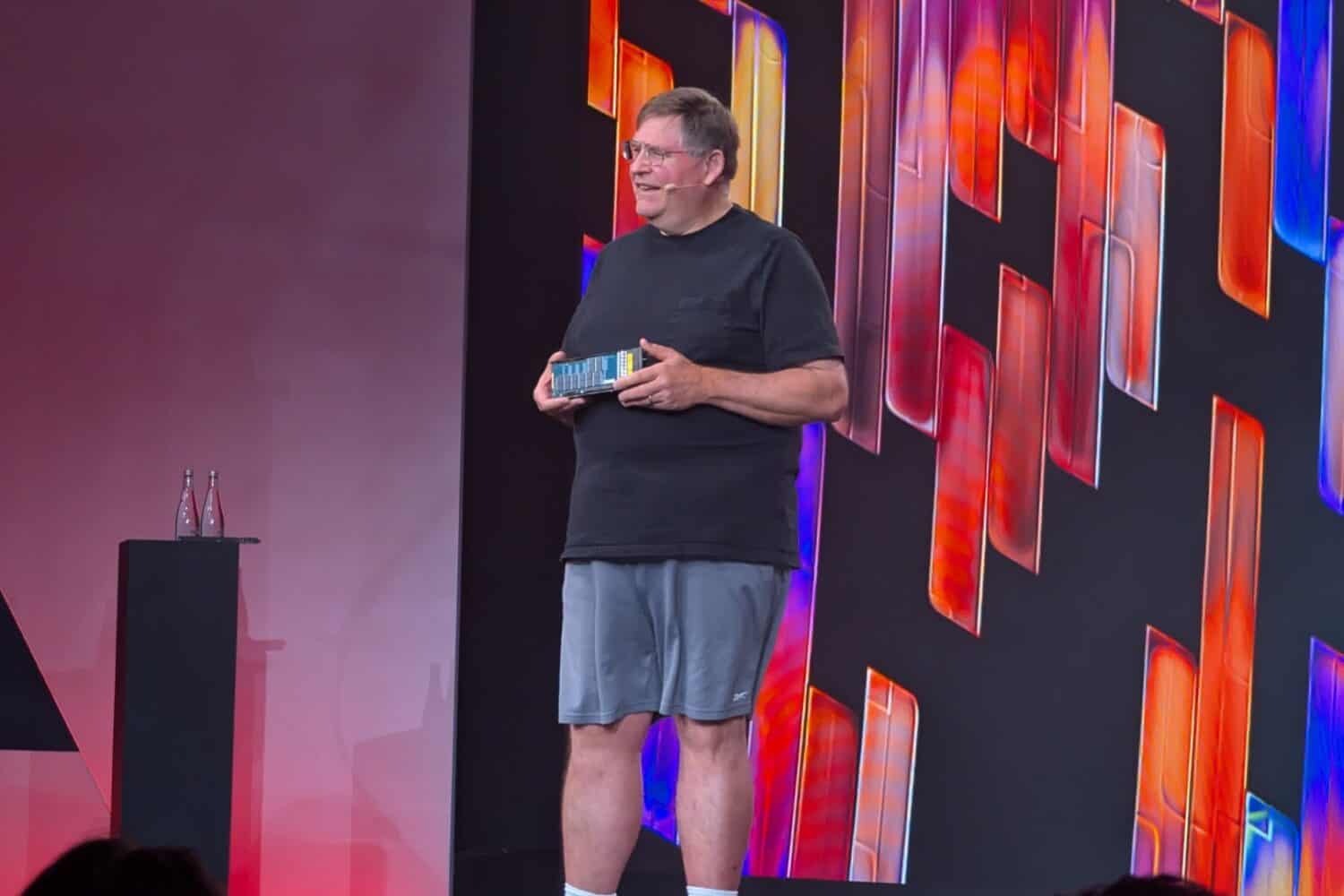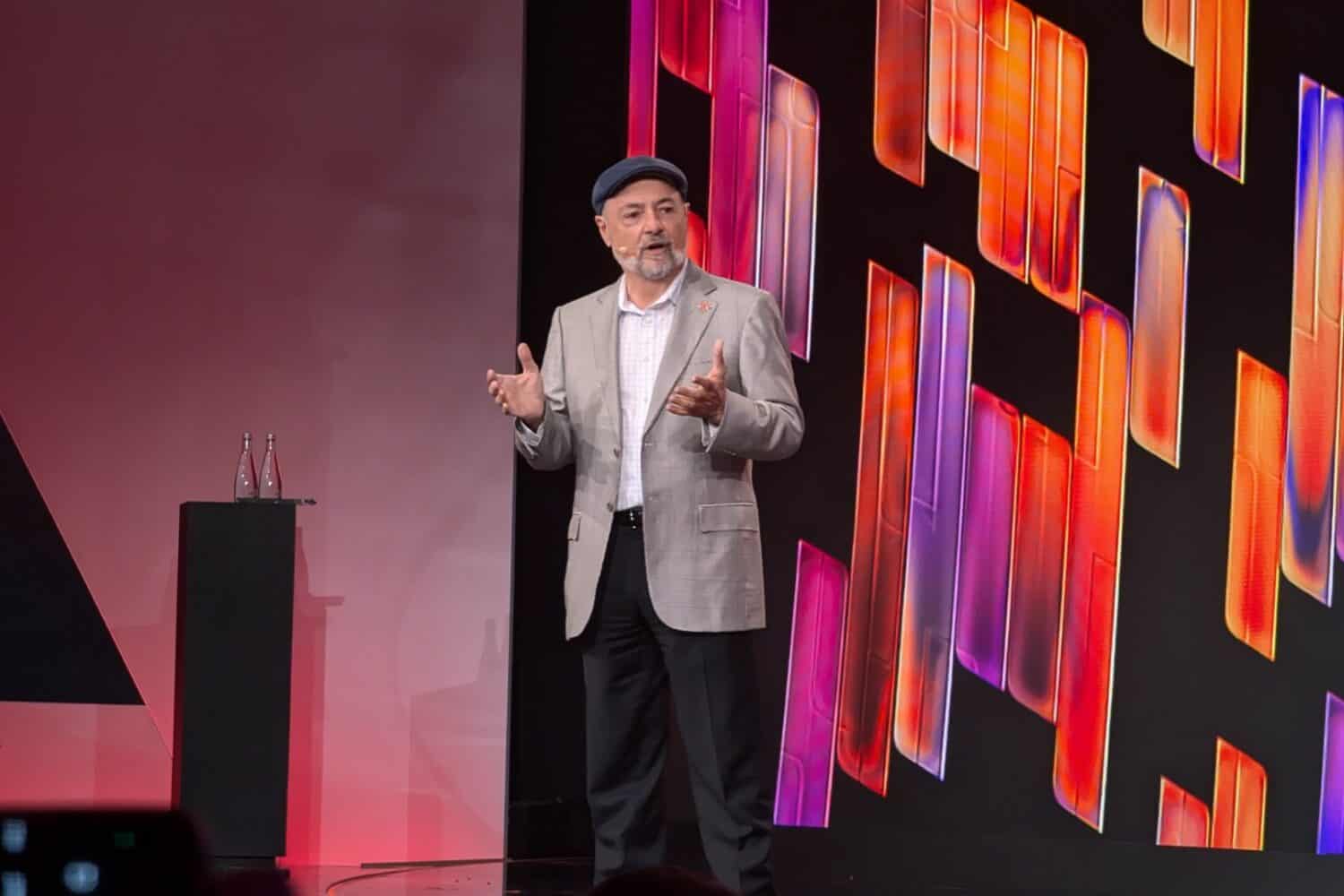Flash-based storage is steadily replacing the old trusty hard disk, or HDD. This won’t stop until the last HDD rolls off the assembly line in a Seagate, Toshiba or Western Digital factory, although that could still take a while. This year, the HDD market will take another few hits. The gap in maximum capacity between flash and HDD will only widen, and we expect big news from the hyperscalers as well.
The market for flash is getting bigger and bigger. That has largely to do with the fact that QLC-based flash has brought the price point down sharply. $20 cents per gigabyte is then often quoted as the magic number. This, coupled with flash’s higher performance over HDDs, makes flash a realistic alternative to magnetic disks.
Flash moves down in the markt
Whereas flash was initially deployed primarily on high-end storage arrays, in recent it moved further and further down in the market. Pure Storage has added so-called capacity flash to its offerings in recent years with both the FlashArray//E and FlashBlade//E. NetApp did the same last year, with the AFF C Series and the ASA C Series. That has caused flash to grow strongly. The growth numbers that Pure, which carries only flash in its product portfolio, realizes year after year speak volumes. Earlier this year, a contact at NetApp told us that almost 100 percent of the growth in all-flash there can be attributed to the new C-Series. All of that is revenue that used to go to HDD-based solutions, which NetApp also offers in other product lines, by the way.
Obviously, flash’s growth is not 100 percent organic. That is, it’s not always that customers specifically ask for it. Companies like Pure Storage and NetApp have also gone to great lengths to make it successful. After all, a lot has been invested in it. So these companies will certainly push it firmly as well.
Even then, though, it has to be affordable. That is the case today. This is not just about the initial purchase cost or even the fees for a Storage-as-a-Service offering. Things like power consumption and storage density also play a role in this. On that score, SSDs are generally at an advantage as well (more on that below). There are some nuances to power consumption of SSDs and HDDs, which we have covered in this article, but we have so far not seen a calculation in which HDDs consume less power than SSDs at scale.
HDD vs flash: old versus new
Flash is becoming increasingly interesting to organizations. The chances that HDDs will regain any of the lost ground are virtually nil. This is because developments in flash continue unabated. We saw this clearly recently during Pure Accelerate, Pure Storage’s annual event. There, Pure Storage announced the latest generation of its Direct-Flash Module (DFM). The company puts these flash modules in all the FlashArrays and FlashBlades it supplies to customers.
The specific design of the DFM allows Pure Storage to make huge leaps in capacity. Just last year, it announced a DFM with a capacity of 75TB. A year later, Pure has already jacked this up to 150TB. Mind you, all this without increasing the size of the module itself, of course. Otherwise they won’t fit in the systems anymore. Basically, a DFM is little more than a bunch of NAND that Pure sticks on a circuit board. Pure1 controls and manages it. If a company in the market develops NAND flash with higher density, Pure can incorporate that into a DFM fairly quickly. For example, the new 150TB DFMs use new QLC technology from Kioxia.
The above architecture is radically different from that of hard drives and SSDs. SSDs use an extra layer of tables stored in DRAM. These tables map the SSD’s writes to flash memory. This requires freeing up space on the SSD. Here we are talking about 1GB per 1TB. In addition, SSDs also need to overprovision, to make sure they can always deliver. Think of overwrites they have to do because of I/O alignment issues. This overprovisioning quickly amounts to about 20 percent. The same things apply to HDDs, by the way, only there the percentages are even higher. In fact, standard SSDs are not much different in architecture than HDDs. Although, of course, performance is better and they consume less power.
For completeness: in principle, there is not necessarily anything wrong with marketing flash on a similar architecture to HDDs. It obviously makes for better adoption because you can simply pull an HDD out of an array and plug in an SSD in its place. In laptops and desktops, this immediately provided such a performance improvement that it became a no-brainer to make the switch fairly quickly. SSDs also perform better than HDDs in data center environments, although it took a lot longer for SSDs to become relatively common there, mainly due to capacity constraints and price.
Developments in flash are not slowing down; HDD developments are
Flash, whether SSDs or DFMs, is already far ahead of HDDs in terms of capacity. Whereas HDDs have arrived at capacities of around 30TB, SSDs with a capacity of 100TB are already on sale. And now, Pure adds the 150TB DFM to the mix too. In fact, the company has already said it will come out with a 300TB module next year. We expect SSDs to continue to make solid leaps in capacity as well. The leaps that HDDs will make will be smaller. Within the 3.5-inch form factor, huge leaps have now become very difficult.

When you consider that the HDD industry has been developing HAMR (Heat Assisted Magnetic Recording) for at least 15 years, the low-hanging fruit has been picked, and with it, the rapid innovation is well underway. HAMR can still reach 100TB per HDD, but then something new will most likely have to be developed. If that also takes a very long time, HDDs will have a difficult time staying relevant and interesting for the market.
During Pure Accelerate, we had the opportunity to speak with John Colgrove, one of the founders of Pure Storage. Coz, as he is called by almost everyone, went all-in on flash (first SSDs, then proprietary DFMs) from Pure Storage’s inception in 2009. In the beginning that was quite difficult, because the first generation of SLC flash was prohibitively expensive. Meanwhile, for more than a decade, he has seen the price of flash go down very steeply, much steeper than that of HDDs. Mind you, for Pure this does differ from other flash providers in the market. Pure’s DFMs are not dependent on DRAM. That means they only have to deal with the price of flash. SSDs, which do use DRAM, cannot rely solely on that price, they have to factor in the price of DRAM as well. That can cause less steep drops for SSDs.
An important question is how long the line will continue to go down steeply. Flash is currently a viable alternative for parts of the storage market, but particularly in the area of colder storage, HDD is still more interesting to many companies. So the flash market will have to continue to innovate fast enough to replace HDD there as well. If not, it may be time to look beyond flash.
Should we already be looking past NAND flash?
When we ask Coz if perhaps we shouldn’t be looking beyond flash, his answer is a firm and brief “No”. That is not at all necessary yet, according to him. “The reason is that it’s all about cost,” he explains. He still does not see a technology that outperforms NAND flash and is also commercially interesting enough.
For that matter, there have been technologies that are better than NAND flash. Coz cites Optane, based on 3D XPoint. That was marketed by Intel and Micron about a decade ago. It was positioned between DRAM and flash and had features of both technologies. “Optane was much better than flash, but also way too expensive,” Coz points out. The latter is always the deciding factor. You can develop such great technology, if it’s too expensive, it’s not going to be successful. So Optane vs flash can fit right in with Betamax vs VHS and FireWire vs USB, to name a few well-known examples.
In addition, there is no reason to look past flash at this time either, continues Coz. He sees no signs at all yet that the steep downward curve of price per GB is going to level off anytime soon. “It’s going to blow hard past disk, new technologies are never going to overtake flash if this doesn’t slow down. And that’s going to take some time,” according to him. He points out that QLC NAND has just gone through 200 layers at this point. The more layers, the higher the density. The expectation is that QLC can go up to 1,000 layers. So there’s a lot of future in that, if it doesn’t also get too complicated to reach those 1,000 layers.
It still surprises even Coz occasionally how much room to improve there still is in NAND flash: “If you had asked me five years ago when we would get to PLC flash [flash with cells of five layers, ed.], I would have said 2025. Now I say 2028 or later.” Again, the law that Coz cited above applies: as long as something scales well economically, don’t touch it if the alternative is more difficult to make and put on the market. Coz asks the following rhetorical question to make this point: “PLC is harder than QLC, so why do it if you don’t have to?”
When will hyperscalers move to flash?
Listening to Coz, it will be some time until the ratios between HDDs and flash stabilize. Until then, flash will only go on to capture more of the HDD market. Hyperscalers play an important role in this. That, along with large enterprise data centers, is the main market for HDDs. Charlie Giancarlo, Pure Storage’s CEO, in conversation with us, calls hyperscalers the soft underbelly of the HDD market. According to him, about 60 percent of HDD manufacturers’ business consists of selling HDDs to hyperscalers. So if that falls away, that’s a serious problem.

The latter seems quite likely to happen in the near future. Says Giancarlo, “The first hyperscaler will go to flash this year. We are currently talking to multiple hyperscalers. One of them is the lead horse. I’m confident they will sign this year.” Mind you, this does not mean that the first hyperscaler will then immediately start deploying FlashArrays and/or FlashBlades. It means they will start working on a design for it. But starting next year, the first orders could then come in. “This development is further proof that we are at the right price point,” adds Pure’s CEO. This is something that not only Pure but also other players in the flash market have been saying for some time.
HDDs will be around for a while, but for how long?
Even if hyperscalers start using flash, it doesn’t mean the end of the HDD right away. That really needs some more time. It’s very hard to predict when the last HDD will roll off the assembly line, as we put it in the introduction to this article. The past has shown that it can be quite difficult to eradicate storage media permanently. Just in early July we read that the Japanese government finally retired the floppy disk. And no doubt there are other examples like that. The traditional hard disk will continue to be around for a while, too.
So, when will the HDD actually die? The 2028 deadline that Pure Storage set last year during Accelerate during all the disk is done rhetoric seems a little too optimistic to us. Pure obviously has vested interests in this, so it’s not surprising that they paint a somewhat rosy picture. By the way, when we inquired last year about this claim, it quickly became clear that Pure did not mean that no more HDDs will be sold from 2028. That prediction was about systems using HDDs.
However, if after the first hyperscaler, the other hyperscalers switch over one by one, things could happen a lot faster than we might expect now. Then HDDs will start losing market share to flash faster than the share grows because of the still rapidly growing demand for storage. Combined with the still declining price per GB for flash and the room for innovation left in flash, the replacement of HDD by flash will continue. Of course, the supply chain has to be able to handle it, so it’s not practical for the flash market if everyone switches today or tomorrow. The factories simply can’t handle that.
No doubt there will continue to be use cases for HDDs for quite some time, although we are now also seeing a resurgence of tape for (very) cold storage. We may eventually end up in a world where storage is split between flash and tape. Although tape, which companies primarily use for archiving purposes, seems likely to face competition from ceramic-based storage. Pure Storage at least seems to see a future in this, as evidenced by its recent investment in Cerabyte. Either way, HDDs will find themselves in a situation where they are not performant enough for many modern workloads and not good enough for archiving either. That’s not a situation with much perspective.
Also read: Pure Storage wants to make hard drives permanently obsolete
